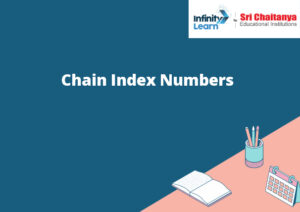Table of Contents
What is Index Numbers
Index numbers are statistical measures that track changes in some quantity over time. Index numbers are used to measure economic growth, inflation, and other trends.
There are many different types of index numbers, but the most common type is the price index. A price index measures the changes in prices of a set of goods or services over time.

What is Importance of Index Number
Index number is an important tool for measuring the performance of an economy over time. It is used to calculate the rate of inflation and to measure the level of economic activity.
How would You identify an Index Number?
An index number is a number used to indicate the magnitude of change in a particular economic variable.
What are the Types of Index Numbers
There are three types of index numbers:
1. Laspeyres Index:
This index measures the price change of a basket of goods from one period to another. It is calculated by dividing the current price of the basket by the price of the basket in the base period.
2. Paasche Index:
This index measures the price change of a basket of goods from one period to another. It is calculated by dividing the current price of the basket by the price of the basket in the current period.
3. Fisher Index:
This index measures the price change of a basket of goods from one period to another. It is calculated by dividing the current price of the basket by the price of the basket in the base period, adjusted for inflation.
What is Value Index
Value Index is a measure of the relative value of a security or portfolio of securities. Value Indexes are used to compare the performance of a security or securities against a benchmark or group of securities.
What is Quantity Index
A quantity index is a statistic that measures the magnitude of a change in a variable, typically a price or quantity. The statistic is usually expressed as a percentage, with 100 indicating no change.
What is Price Index
A price index is a measure of the average change in prices of a basket of goods and services over time. The CPI is the most common price index.
What are the Uses of Index Number in Statistics
Index numbers are used to measure the changes in a particular variable over time.
What are the Advantages of Index Number
Some advantages of index numbers are that they allow for comparisons of data over time, they allow for comparisons of data between different geographic areas, and they can be used to measure economic growth. Additionally, index numbers can be used to identify trends in the economy and to make forecasts about the future.
What are the limitations of Index Number
Index numbers are limited in their ability to measure economic change. They are based on a fixed basket of goods and services, and so they are unable to capture changes in the composition of the economy. They are also unable to capture changes in quality or in the relative prices of different goods and services.








